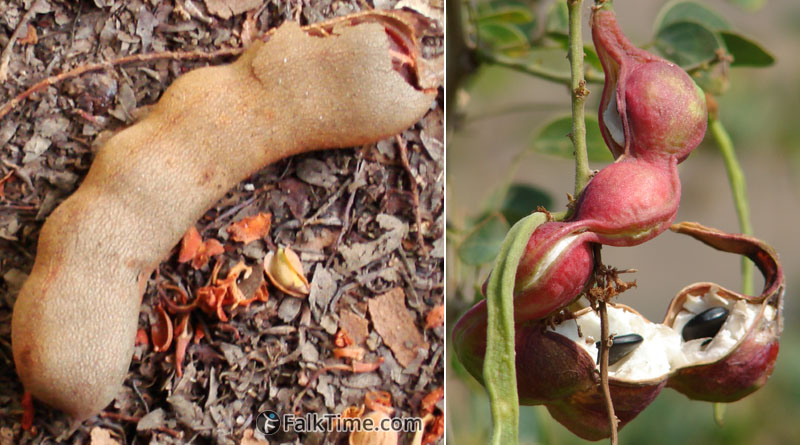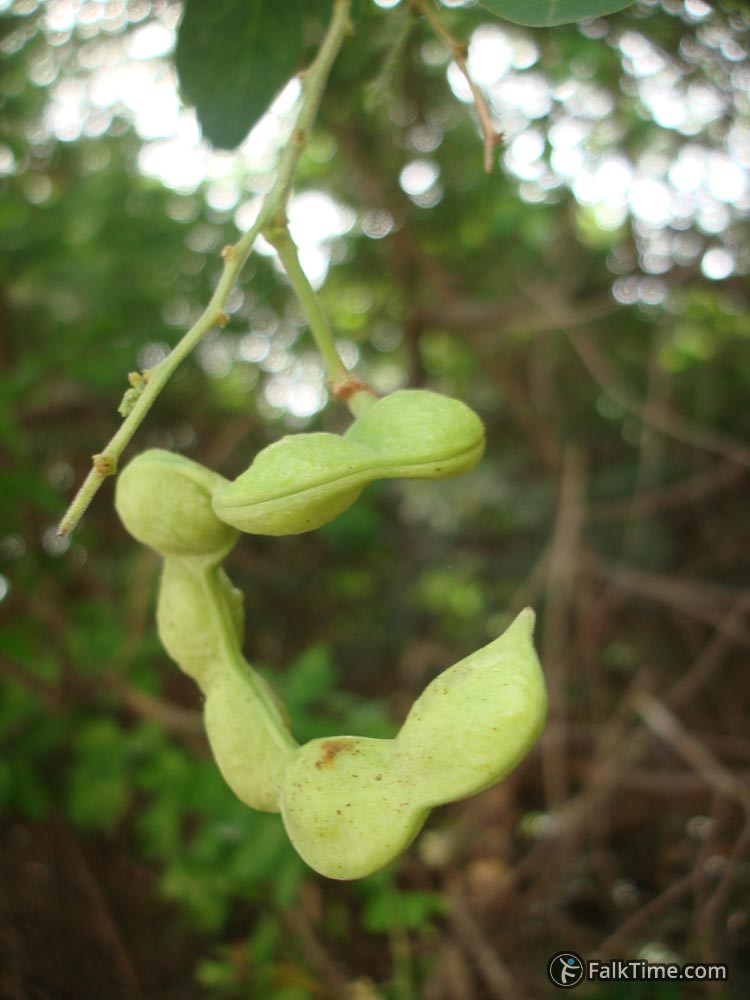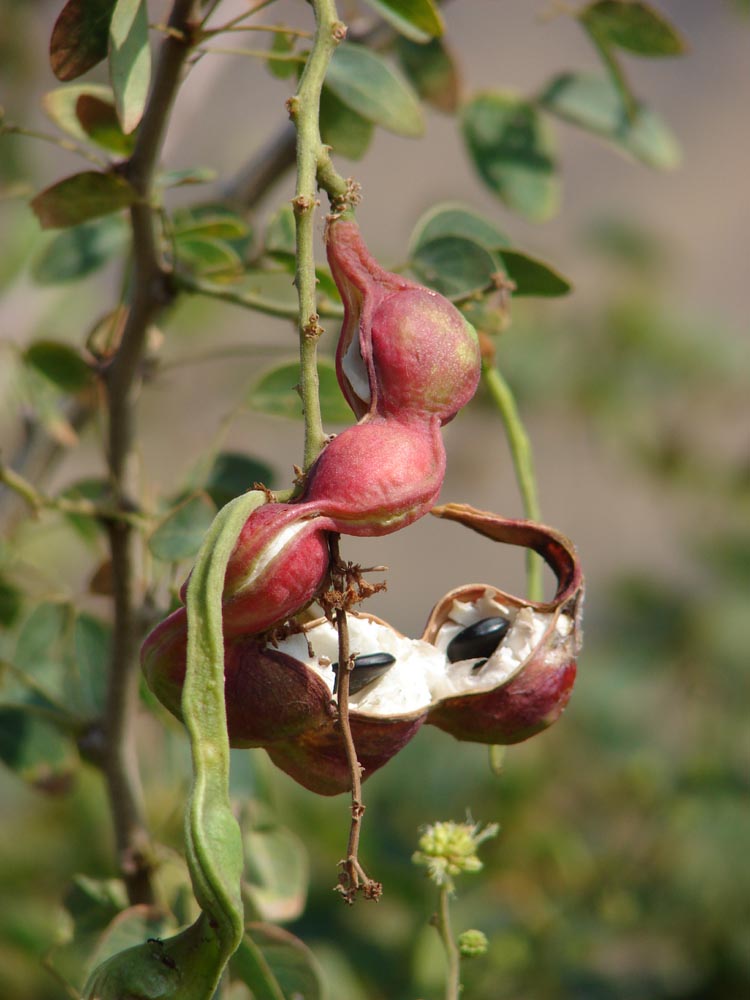Tamarind (มะขาม)
(Tamarindus indica)
Tamarind is definitely not a fruit – these are pieces of very thick jam (that one shouldn’t cook) in a pod. After I’ve tasted tamarind and egg fruit, I’m obsessed with one question: should one bake bread or buy cheese, when they are probably already growing somewhere?
On the right picture you see manila tamarind, I’ll tell you about it in the end of article.
Taste of tamarind
Ripe tamarind reminds of apple-plum jam or a jam made of dried apricots – it is sweet with dried fruits’ aroma. Consistence of tamarind’s flesh reminds of dry dates. In some languages it even bears the name “Indian date”.
As a dried fruit (that did the labor of drying itself), tamarind is tasty. But I doubt if it will be your choice, when there are so many ripe and juicy tropical fruits around.
Unripe tamarind is quite sour, it is used in culinary as the alternative to lime. And you may see it for sale in markets. Actually the riper becomes the pod, the sweeter is its flesh.
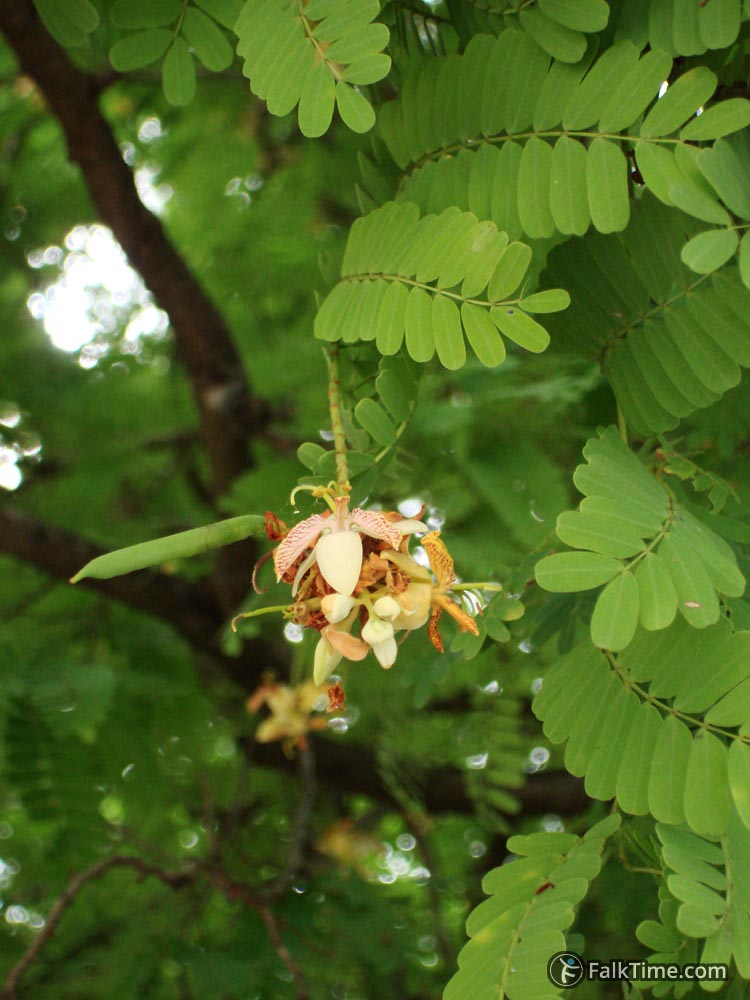
How to choose, transport & store
Tamarind is often sold being packed as potatoes. Prior to buying 1 kg of tamarind pods, one should rather taste it first to avoid thinking of what to do with the rest of tamarind, if it doesn’t suit your taste.
The flesh of ripe tamarind doesn’t adjoin walls of the pod 100%, so the pod can be easily damaged. From one hand it remains edible, one just needs to wash the flesh. From the other hand if you intend to transport pods, you should keep in mind that they are fragile.
Tamarind can’t be stored for long time. And when you choose it, take a look at pod’s skin – it shouldn’t be wrinkled.
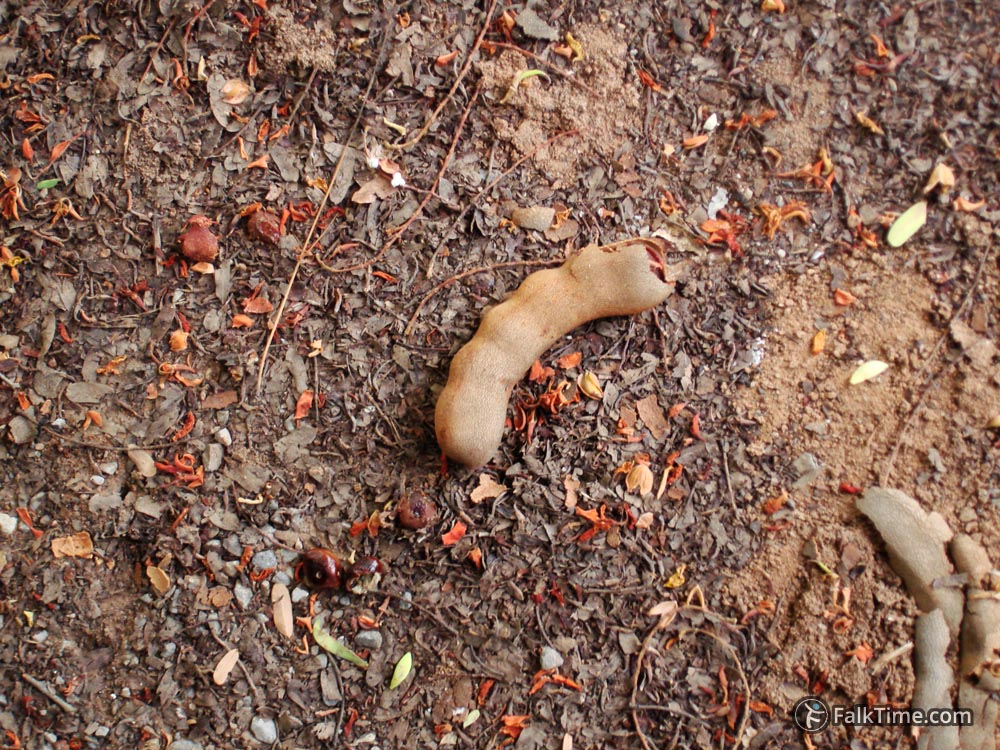
How to eat tamarind
First of all one should get rid of the shell. The brown flesh has kind of “veins” over it. They are edible, but one may not like them, so one should rather peel them off. Don’t hurry to bite the flesh: it contains big (~1 cm) stone hard inedible seeds. Remember that dentist is usually not included in travel insurance.

Tamarind is widely used in Thai cuisine – desserts, candies, drinks and different kinds of sauces and marinades. F.e. famous Pad Thai (Thai-style fried noodles) is cooked with tamarind paste. So if you are going to cook Thai dishes at home, it will be a good idea to bring a jar of tamarind paste from your journey to Thailand.
When and where to find
Harvesting of tamarind in Thailand begins in December. So the season for tamarind is the winter. Nevertheless tamarind can be found in Thailand all year round. Generally packages of tamarind are put in bottom shelves (like one does it with potatoes), so if you are looking for tamarind – don’t forget to look down. Tamarind’s price starts from 60 THB per 1 kg.

Manila tamarind (มะขามเทศ)
Besides usual tamarind one can meet in Thai streets/markets stalls with manila tamarind (Pithecellobium dulce). It’s not that common and certainly the seller will be diligently taking the flesh out of soft cracked pods. Rareness of manila tamarind is underlined with its Thai name, if one translates it, it will sound “foreign tamarind”. Though usual tamarind (Tamarindus indica) is of African origin, but it seems that this is long forgotten since it has become so popular.
Manila tamarind’s taste is not something one would crave for – it’s dull and grassy, sometimes a little bit sweet, sometimes a little bit sour (depends on its ripeness). Seeds and soft husk are inedible.
Source of pictures without FalkTime watermark: Wikipedia.

